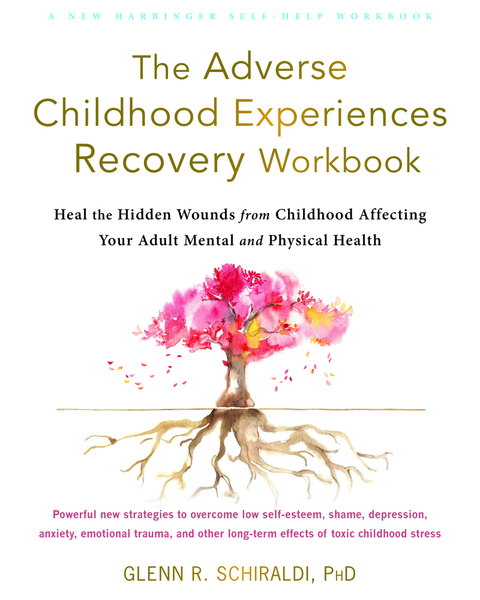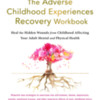So many people are struggling with unhealed, hidden wounds from toxic childhood stress. For some, the pain is obvious. Others might look outwardly strong, capable, and in control. However, unhealed inner wounds cause needless suffering and can lead to a dizzying array of psychological, medical, and functional problems. Fortunately, there is hope for healing—even decades after traumatic wounding from ACEs occurs—enabling us to be 100% there for ourselves, our families, and others we work and play with.
This three-part blog discusses the road to recovery from ACEs. Part I explained “The Principles of Healing.” In Part II, we discussed how traditional “talk therapies”—telling your story in words and/or replacing unreasonably negative thoughts—might not be the most effective starting place. It is true that talk therapies might calm the arousal regions of the brain and facilitate and complete the healing process. However, trauma memories situated in the visual, emotional, and survival areas of the brain might initially be inaccessible to words and logic. Indeed, prematurely relating one’s trauma story might trigger emotions that seem overwhelming, especially when one is lacking skills to manage those emotions.
In this part, Part III, we discuss three effective new treatments, which can be used alone or in combination with self-managed skills. These promising treatments access and rewire implicit memories with little or no verbalizing. As we discussed in part II, Implicit memories are not stored in the logical, verbal left brain but in the non-verbal right brain, with its deep neural connections to the emotional and survival regions of the brain. The non-verbal aspects of implicit memories include images, senses, bodily states, survival impulses, and a wordless felt sense of shame or dread.
These newer approaches, then, start with strategies that target brain regions that regulate images, emotions, and bodily experieinces. These strategies involve imagery, emotional regulation, and body-based skills, They rely less on left brain functions of words and logic at first. Rather, they interweave old disturbing memories with calm, nonjudgmental acceptance.
These approaches first focus on: (1) calming the body and areas of the brain that regulate emotions and the non-verbal survival instinct; and/or (2) rewiring disturbing images that are stuck without words in memory. Eventually disturbing memories can be thought about and talked about without undue distress. I’d like to describe three of the impressive newer treatments, which are effective, quick, and grounded in new understanding of the brain and the way traumatic memories are stored. They can treat traumatic wounds from both the recent or distant past.
Body-centered Approaches
Body-centered approaches are “bottom-up,” first calming the body and brain regions associated with survival and emotions in order to then calm the higher cognitive levels of the brain.
When we are relatively calm—stress arousal is neither too high nor too low—we say we are in the resilient zone. Here, your brain is hard-wired to think and speak effectively, regulate emotions, and feel that your sense of self, your emotions, and your body are all connected. However, toxic childhood stress kicks us out of the resilient zone. The brain goes to survival mode, stuck in a state of hyper-arousal. In this high-alert state we are hardwired to shut down the thinking and reasoning left brain. And we feel disconnected from self, emotions, and the body. Conversely, regions of the brain that govern strong physical and emotional arousal and tendencies to move become over-activated.
If stress is unrelenting or particularly overwhelming (such as when one is overpowered and unable to flight or flee) one can get stuck in a hypo-arousal state, characterized by freezing, numbness, exhaustion, or collapse. In this state, you are also unable to talk or think reasonably.
In the body-oriented approaches, returning arousal to the resilient zone is the first order of business. The therapist might say, “I notice as you are attempting to relate what happened that your shoulders hunch. Let’s put telling the story aside and track what’s going on in your body.” Tracking means paying deep attention to what’s happening in the body. Tracking brings arousal back to the resilient zone, bringing back online the left brain and regions involved with feeling connected to self, emotions, and the body. If one is stuck in the collapsed state, the therapist might say, “Let’s see what happens when you stand up and slowly complete the action that you weren’t permitted to complete back then. Imagine you are actually pushing away that perpetrator from the strength of your core and then running to safety.” Once the action is completed, the survivors tracks what happens in his/her body. This action expends the energy frozen in memory, returns arousal to the optimal resilient zone, brings back on line key brain areas that were forced off line, and begins to reverse the freeze state that is locked in the traumatic memory.
Other moving and tracking skills are taught and practiced anytime one needs to return to optimal arousal levels, If one is stuck on hyper-arousal, these skills can reduce arousal by expending stress energy. For those in the hypo-arousal state, the same skills can reverse the immobilized shutdown state. These and other body-oriented skills can enable you to eventually put words to your story without undue distress.
The pioneers in body-oriented treatment approaches are Pat Ogden (sensorimotor psychotherapy), Bessel van der Kolk, and Peter Levine (somatic experiencing).
Accelerated Resolution Therapy (ART)
Derived from the well-respected treatment known as eye movement desensitization and reprocessing (EMDR), ART adds many innovative strategies that appear to make it even more effective. Research indicates that this treatment resolves issues like PTSD, guilt, depression, and pain, often in fewer sessions than EMDR requires.
ART starts by calming disturbing bodily sensations and emotions associated with a traumatic memory, using eye movements, breathing, and tools such as imagining a vacuum cleaner taking away lingering distress. As stress arousal comes down, one is able to tap into the creative healing capacity of the brain. When ready, the survivor processes the disturbing scene held in memory, viewing the scene like a movie while moving the eyes. The survivor often notices that the scene and the body’s response begin to shift in favorable ways. Next, the survivor is guided to erase the disturbing scene and replace it with a new positive scene. The survivor is prepared to handle triggers and the resurfacing of troubling images. Then the survivor imagines bridging to a normal, happier future without negative memories or images.
Intensive Trauma Recovery (ITR)
Intensive Trauma Recovery (ITR) gently, quickly, and effectively eliminates or greatly reduces disturbing trauma symptoms. Like ART, this treatment is effective for resolving traumatic memories from the earliest years.
ITR shows how the brain and body are instinctually hard-wired to survive during a traumatic event, following the seven phases of the Instinctual Trauma Response® model.Trauma memories get stuck—frozen in the non-verbal/emotional brain where there are no words and no sense of time—causing a person to relive the event over and over. ITR guides the recoding of memory fragments so that the verbal/logical brain sees that the event is finally over and in the past. ITR includes two major tasks:
- Graphic Narrative™ uses a series of drawings and compassionate recounting of the story to reveal and sequence fragmented trauma memories (“memory shrapnel”) and put words to them—providing a beginning, middle, and end. The event then feels settled, completed, and in the past. Often the hand can express what the mouth cannot. Once the memory is expressed on paper it is easier to talk about what is safely “out there,” no longer bottled up inside.
- Externalized Dialogue™ brings to light parts of the person that are frozen in the past, and are the source of negative symptoms, behaviors, or beliefs. The person learns about these parts and the True Self. Dialogue between the True Self and parts helps the person settle and bring together the parts so that the person can move ahead fruitfully. It is a tool for life.
ITR treatment is flexible. It can be done virtually or in person. It can usually be completed in 20-30 hours, 2-6 hours per day, over a period of a week or two.
Conclusion
Traumatic wounding is not a life sentence. Relief and recovery are possible. Consider finding a trauma treatment specialist in your area (see the resources below), and start a reading program to help you better understand the nature and treatment of trauma. The healing principles we have discussed as relates to professionally managed treatments also apply to the many self-managed skills that survivors of ACEs can master. These skills are explained in works like The Adverse Childhood Experiences Recovery Workbook.
Resources
Find trauma treatment specialists in your area at:
- SIDRAN Institute (410-825-8888; help@sidran.org;" target="_blank">https://help@sidran.org; https:// www.sidran.org).
- Accelerated Resolution Therapy (ART; 877-675-7153; https://acceleratedresolutiontherapy.com).
- Intensive Trauma Recovery (800-510-6383; https://helpfortrauma.com). Also find free trauma-effective training for parents, children, educators, mental health professionals, and peer supporters to understand the universal, instinctual stages of the response to overwhelming stress (and the rationale for ITR).
- Sensorimotor Psychotherapy Institute (800-860-9258; https://www.sensorimotorpsychotherapy.org)
About the Author
Glenn R. Schiraldi, PhD, has served on the stress management faculties at The Pentagon, the International Critical Incident Stress Foundation, and the University of Maryland, where he received the Outstanding Teacher Award in addition to other teaching/service awards. His books on stress-related topics have been translated into seventeen languages, and include The Adverse Childhood Experiences Recovery Workbook, The Resilience Workbook, The Post-Traumatic Stress Disorder Sourcebook, and The Self-Esteem Workbook. The founder of Resilience Training International (www.ResilienceFirst.com), he has trained laypersons and clinicians around the world on various aspects of stress, trauma, and resilience.



Comments (1)